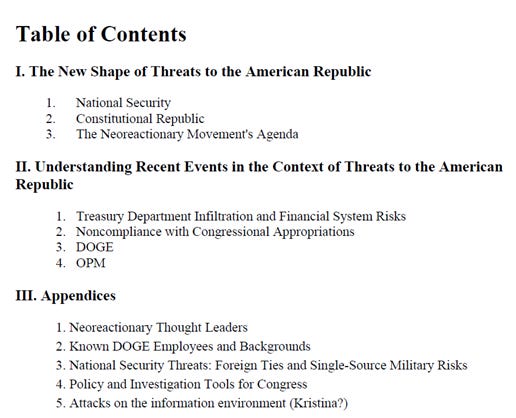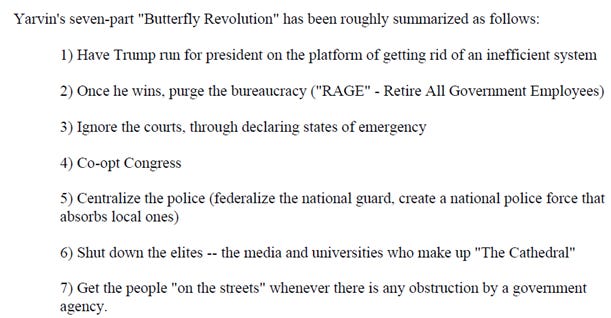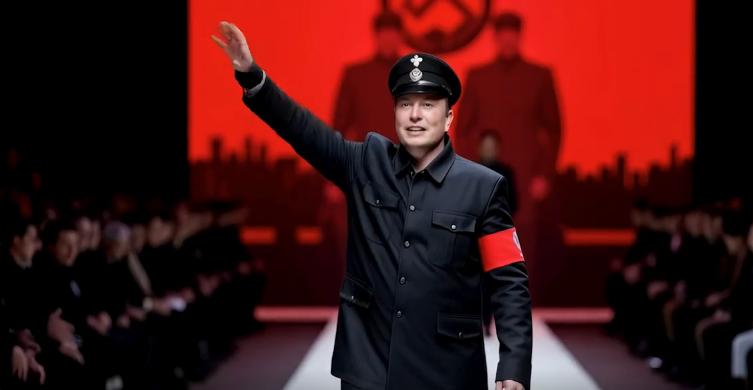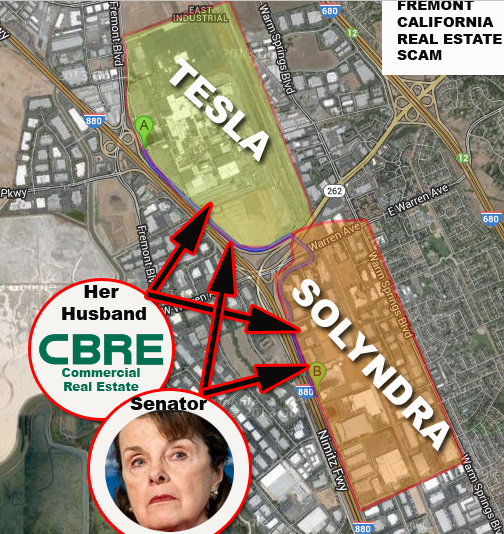Elon Musk’s Starlink satellite internet service could take over a Federal Aviation Administration contract to upgrade the nation’s air traffic control systems, The Associated Press reported.
https://www.wired.com/story/starlink-scam-compounds/
Starlink’s internet equipment has already been installed in at least two different FAA facilities, according to the wire service, which cited government employees and other people familiar with the matter. Starlink is also preparing to take over a $2 billion contract currently held by telecom provider Verizon, the AP said.
Starlink, which is owned by Musk’s SpaceX, provides satellite internet access for residential and business customers. It bills itself as the most “advanced internet system,” providing access to users in remote locations. The FAA currently relies on Verizon to power its air traffic control system, which monitors more than 45,000 flights and 2.9 million airline passengers per day.
Musk this week criticized the FAA’s air traffic control network, writing on X that the “Verizon system is not working and so is putting air travelers at serious risk.”
Verizon did not immediately respond to CBS MoneyWatch’s request for comment on Musk’s claim or the status of its contract with the FAA.
On Monday, the FAA said on X that it “has been considering the use of Starlink since the prior administration to increase reliability at remote sites, including in Alaska.” The agency also said it is testing one Starlink terminal at the FAA’s facility in Atlantic City, New Jersey, and at two terminals at “non-safety critical sites” in Alaska.
Bloomberg News reported on Monday that Musk last week approved 4,000 Starlink terminals to be shipped to the FAA for testing, citing a person familiar with the matter.
The FAA told CBS News that “no decisions have been made” about a long-term contract to upgrade its air traffic control systems.
Representatives for Musk didn’t respond to a request for comment.
Deport Musk to Mars’: Gainesville feminist group protests outside Tesla dealership
Potential conflict
Lawmakers and experts on government contracts have expressed concern about potential conflicts of interest for Musk, who is spearheading the Trump administration’s effort to slash federal funding even as companies like SpaceX do business with the government.
Jessica Tillipman, associate dean for government procurement law studies at The George Washington University Law School, noted that federal regulations prohibit government contractors from having conflicts of interest, and warn even against the mere appearance of such conflicts.
Scott Amey, general counsel for the Project on Government Oversight, a nonpartisan watchdog focused on reducing government corruption, told CBS MoneyWatch that Musk’s close relationship with President Trump could amount to a conflict of interest.
“You do worry if there is pressure from the top, even from the president himself, to favor his system over the existing system,” Amey said. “People could be afraid to lose their jobs and will do whatever they can to please Elon Musk.”
Such contracting decisions should be made “by career civil servants doing what is in the best interest of taxpayers,” he added.
Some Democratic lawmakers said the FAA moving to adopt Starlink’s technology raises potential ethical concerns.
“How much richer will Elon get with an FAA contract to another one of his companies? My ELON MUSK Act would stop this blatant corruption,” Rep. Mark Pocan, a Democrat from Wisconsin, wrote on X on Tuesday, referring to proposed legislation that would direct federal agencies to end any contracts held by a special government employee, similar to bans that apply to members of Congress and other federal employees.
Bombshell report reveals staggering amount of government funds paid to Elon Musk
Elon’s Bizarre Chainsaw Antics Sadly Can’t Cut Tesla’s Declining Sales
Elon Musk, once revered as a tech visionary, now appears to be more interested in playing a far-right meme than delivering on his promises of self-driving cars and putting men on Mars. His latest antics—wielding a chainsaw on stage at the Conservative Political Action Conference (CPAC) while rambling incoherently about comedy, gold reserves, and government efficiency—is another one of those instances where his transformation from once an entrepreneur to now an erratic sideshow was on full display.
But while Musk indulges in political theater and self-aggrandizing quips, Tesla is experiencing an unprecedented slump in both sales and stock value.
The Spectacle Over Substance
Musk’s bizarre CPAC appearance quickly overshadowed whatever message he had hoped to convey. Dressed in sunglasses, a gold chain, and a t-shirt proclaiming, “I’m not procrastinating, I’m doing side quests,” he paraded on stage, chainsaw in hand, gifted to him by Argentinian President Javier Milei. Musk’s disjointed statements—such as declaring, “I am become meme,” and pondering whether Fort Knox’s gold was real—left viewers bewildered.
Even supporters struggled to defend his erratic performance, as the phrase “Ketamine” trended on X (formerly Twitter), referencing his previously admitted use of the drug. Meanwhile, his ex-girlfriend Grimes publicly pleaded for him to contact her regarding an urgent health emergency concerning one of their children.
His chaotic behavior, now a recurring theme, is more than just a PR disaster—it’s having tangible effects on Tesla’s financial health.
Tesla’s Crashing Sales and Market Cap Decline
Tesla’s global sales are plummeting at an alarming rate. In California, a long-time stronghold for Tesla, sales dropped by 11.6% in 2024, with nearly 30,000 fewer Model 3 registrations. While Tesla remains a market leader, the downward trajectory is undeniable.
The situation is even more dire in Europe. In Germany, Tesla sales declined by a staggering 60% in January 2025. In France, the drop was even worse at 63%. Even the UK, where EV sales overall increased, saw an 8% decline in Tesla purchases. China, the largest market for EVs, also reported an 11.5% decrease in Tesla sales, despite the company’s significant investment in its Gigafactory in Shanghai.
A key driver of Tesla’s declining sales is Musk himself. His vocal alignment with far-right politics and controversial policy decisions, including his leadership of Trump’s so-called Department of Government Efficiency (DOGE), have alienated Tesla’s core customer base—wealthy, progressive, urban EV buyers. As Tesla loses support from this demographic, it has yet to gain meaningful traction among Musk’s newfound conservative fanbase, many of whom remain skeptical of EVs.
Stock Plunge: The Market Has Had Enough
Tesla’s stock has taken a nosedive, dropping over 25% in early 2025. The once-iconic EV maker, whose market cap soared past $1 trillion, has now slipped below that milestone. Musk’s entanglement in political controversies, along with lackluster updates to Tesla’s product lineup, has eroded investor confidence. Even Tesla’s much-anticipated software upgrade for its partially automated driving system in China failed to impress, further dampening enthusiasm for the brand.
Compounding these issues, Tesla’s earnings report for Q4 2024 showed an 8% drop in automotive revenue and a 23% decline in operating income. The long-dominant EV maker now faces mounting pressure from competitors like BYD, Rivian, and legacy automakers that have ramped up their EV offerings.
The Ultimate Question: Can Tesla Recover?
With Tesla’s financial outlook growing increasingly grim, Musk’s erratic behavior is no longer just a distraction—it’s a liability. His willingness to prioritize political theatrics over corporate strategy is actively driving customers and investors away. While Tesla’s upcoming Model Y refresh might provide a temporary sales boost, the company’s long-term prospects are uncertain as long as Musk remains more focused on internet memes and conservative rallies than on delivering reliable, competitive EVs.
For years, Musk has cultivated an image of himself as a visionary genius. But as Tesla’s stock and sales continue their downward spiral, it appears that fewer people are willing to buy into the performance.
Democratic Insiders Are Sharing A Warning About Curtis Yarvin, Elon Musk & Neoreactionaries
DNC employees and think tank workers are spreading a document about the Neoreactionary threat to democracy
Since February 5th, 2025, a document warning about Curtis Yarvin and the Silicon Valley led coup attempt has been circulating among think tank experts and DNC employees. The document is titled “The Imminent Neoreactionary Threat to the American Republic”. It opens with a statement that the brief was, “iteratively and collectively compiled by a broad, bipartisan, and decentralized network of experts who wish to remain anonymous due to concerns about being targeted.”
The full document is here. You can see the table of contents below:

The title of the actual file when I received it was “Evidence_Brief_for_Journalists”, and the introduction describes its aim as “explaining the nature of the current political crisis to journalists who are attempting to inform the public.” This would lead one to think the document was largely written for the benefit of the press.
However I spoke with two sources who are members of these groups and received the document. They told me that to their knowledge the document mostly spreading among people you might broadly refer to as “policy wonks”. One source I interviewed explained: “It is a thing for think tanks to frame overviews for laypeople as briefs for journalists or congress, see the IPCC reports. Part of me thinks the framing ‘for journalists’ is just a shortcut for ‘this is somewhat specialized knowledge broken down’”.
The paper opens by acknowledging the scope of the executive power grab being perpetrated under President Trump, and the destabilization wrought by Elon Musk and his DOGE team. It then notes, “the threat is an order of magnitude beyond” just a presidential power grab. Musk, it argues, is tied to a “broader group” of Silicon Valley tech elites, including Peter Thiel and Marc Andreessen, who seek to end Democracy. Curtis Yarvin is labeled a “thought leader” in this group, “called the Neoreactionaries”.
I will stop here to note that this summary is accurate enough for mass consumption. But I have some issues with it. Musk probably would not label himself a Neoreactionary and does not have much of a history with Yarvin. Peter Thiel does, but it’s more a relationship of patronage than mutual influence. It would be more accurate to say that Thiel and Andreessen find Yarvin useful, because of his success in spreading to a lot of young techie kids the idea that CEOs should run the world.
Musk, I feel, has largely jumped on this bandwagon because those kids are useful foot soldiers. Yarvin’s ideas about “retiring” all government employees and destroying the independent media and academia are convenient for his own ambitions. This context may be unnecessary for explaining the danger to regular people, but I think it is a mistake to credit Yarvin with more power than he holds.
The document refers to him as the “leader” of the Neoreactionary Movement. I would not advise ignoring his influence and centrality here, but Yarvin is not dangerous because of his leadership abilities.
That all said the document sums up the threat quite well: “The Neoreactionaries have openly stated their aims: to destroy the nation-state and the Constitutional order and replace them with a new privately owned corporate state, to be run by a CEO-dictator. Citizens become subjects owned by the state – ‘state slaves’ – because ‘everything rots when it has no owner—human beings included’.”
Those quoted lines are, of course, Yarvin’s. From here, the document argues that Musk and his team are attempting to bring about this dystopia by taking over the “nervous system of the state”. These would be the data and communications systems DOGE is trying to centralize in its unaccountable hands. Next, the authors of this document make a call to action:
“The most dramatic reversals of democratic breakdown (1977 India; 2022 Brazil; 2023 Poland) have been accomplished by radically large-tent, cross-ideological coalitions with little in common except a desire for the continuation of a Constitutional order. Evidence suggests that the present threat to American democracy is dire enough that such a broad-tent approach focused on Musk and his associates may be required.”
This is the most interesting and hopeful part of the whole document for me. For one thing I think it accurately states what is needed in the present moment: a popular front against autocracy and dictatorship. (I would add to their list of relevant examples France from 1934-38.) It is heartening to see evidence that this understanding has started to grow within the DNC policy set.
The source who sent me this document in the first place described themselves as a member of “a few unofficial networks of climate activists who are high ranking in the government and policy / think tank circles”. They noted that these are normally “very milquetoast lib spaces” but “they’re being radicalized” rapidly.
Both sources I interviewed for this requested anonymity. The second person I talked with gave an explicit reason: “…I’ve suspected for a while a lot more things in DNC stuff was compromised than people were comfortable with”. In other words, they believe the Republican Party has spies within the DNC. My sources worried these “GOP moles” might retaliate against them, but moreso they worried the document itself might contain false information, meant to provoke a reaction that would be useful to Republicans.
While I think this caveat is worthwhile, I should also note that I have spent more time than most studying Curtis Yarvin and the Neoreactionaries. Nothing in this document struck me as obviously false or incorrect, nor did the tone seem hysteric or unreasonable.
I asked my sources if over the past month they’d seen more people talking about Yarvin in their daily lives, which involve communicating and working with DNC staffers and politicians. One said, “No” and “That’s kind of one of the odd things to be frank. This guy is being brought to big events in D.C. He’s been referenced by Bannon and Vance. I have heard his talking points come from Republican mouths but he’s largely not tracked.”
It is noteworthy, then, that influential individuals in the policy space, with connections to Democratic politicians and the DNC as an organization, have started a grassroots effort to spread the word about Yarvin as a threat. It is even more noteworthy that this document is unsparing about the danger, and the fact that a clock is currently ticking over all our heads:
“If non-governmental actors (by which we mean unelected, unratified, unvetted, untrained, unconstrained, and/or unaccountable actors) gain access to key digital infrastructure, they can seize control of critical functions of government in ways that will be difficult or impossible to reverse.”
In a section titled “National Security”, the focus shifts to Elon Musk, who it claims “poses a uniquely significant security risk”. This is because Musk and DOGE espouse “anti-Constitutional ideologies” and “are under the influence of America’s principal foreign adversaries (China and Russia)”. It goes on at some length about Musk’s foreign business interests and how they might compromise him.
I don’t disagree that he is compromised, but I see his actions as very much consistent with those of a man seizing power for himself. I think it would be a strategic mistake to focus popular messaging around this in terms of how it empowers “America’s principal foreign adversaries”. The primary adversary Musk has empowered is himself, and he is now a greater danger to every citizen of the United States than any foreign government.
The next section of the paper days out the definition of a coup:
“In essence, a coup is a 1) rapid seizure of state power by unelected actors, who acquire that power by 2) seizing critical government infrastructure and 3) weaponizing it to neutralize legitimate government actors’ efforts to stop them. The unelected actors then use this power to 4) remake the rules of the political game in a way that cannot easily be checked or undone through democratic processes.”
It argues convincingly that all four of these steps are underway now. One thing I found compelling is the way it recognized the threat cryptocurrency represents right now, and how it can and will be used by the new regime to cement their power in ways that sidestep the present legal system:
“Without canceling elections, for example, cryptocurrency can be used to create informal but powerful new levers of political influence: politicians can sell personal coins to unknown buyers who “vote” on public policy on the basis of their shareholder power, shielded from public view.”
Next we have a summary of the Neoreactionary Agenda, which lists some additional names among the Silicon Valley elite currently championing an overthrow of democracy. These include David Sacks, Balaji Srinivasan and JD Vance. Also name-dropped is political theorist Nick Land, who is referenced twice in the paper.

The authors next lay out Yarvin’s concept of the “Butterfly Revolution”, based on an essay he wrote in 2022 laying out how a “full reboot” of the U.S. government could be accomplished.

Subsequent pages summarize the first days of the Trump administration and DOGE activity and show how they comport with the “Butterfly Revolution” blueprint.
We’ve all lived that in real time, so I won’t summarize their arguments here. The document does end this segment with a section on “Actions and Rhetoric to Watch”. First are government contracts, which fund many of Musk’s companies at present. Next is “Greenland and Mars”:
“A core tenet of neoreactionary ideology is the replacement of nation-states with “network states.” But states require territory. Technocracy Inc., a predecessor to the Neoreactionary movement whose one-time director was Elon Musk’s grandfather, proposed a North American Technate where the entire continent of North America would be united under one Technocratic Super State. There is currently a Peter Thiel-backed “network state” project called Praxis in Greenland. Musk’s public statements about colonizing Mars also can be read as part of a territorial project.”
Lastly it lists Crypto, which the authors primarily seem to fear as a method of deniably bribing Trump.
Overall, the document is thorough in its layout of the Neoreactionary ecosystem, and the actual plan currently being enacted to end U.S. democracy. It includes a section that lists several of the earliest known DOGE employees, and quotes extensively from Yarvin and less extensively from Land.
The paper’s ultimate conclusion is that Musk is using this moment to turn himself into the kind of unitary all-powerful executive Yarvin longs for, one who rules alongside a largely “ceremonial” President. Congress and the courts would also be “ceremonial” at best in this new order.
Again, I do not believe Musk is particularly well read on Curtis Yarvin’s work. But Yarvin’s dream of a CEO-King ruling next to a puppet president gels with what some of Elon’s confidants have described as his ambition. A recent Vanity Fair article quoted a “close associate” of Musk’s from Silicon Valley. He told them:
“Elon believes he should be emperor of the world, and this is his way of showing people what he’s capable of as emperor. He truly believes his way of handling the world is the best possible outcome for everyone in it.”
The last few weeks provide more than enough proof that the authors of this document accurately understand the danger we are in. Unfortunately, aside from the suggestion of a popular front against dictatorship, the document is short on solutions. There is one line that promises: “Section III articulates what Congress and other actors can do” to stop Musk. However, the document in its present form does not include a Section 3 or any comprehensive suggestions.
If the situation weren’t so dire, I might find that funny.
The full text of this document can be found at this hyperlink.
Steve Bannon spoke to UnHerd’s James Billot this week and brutally tore into Elon Musk, clearly trying to reignite the MAGA civil war between the Bannon-led base and the billionaire “tech bros” in President Donald Trump’s inner circle.
Bannon, a former Trump aide and campaign manager turned podcaster, told Billot that “Musk is a parasitic illegal immigrant.”
“He wants to impose his freak experiments and play-act as God without any respect for the country’s history, values, or traditions,” Bannon added in the opening line of Billot’s article titled, “Steve Bannon is ready for war He talks Musk, China and a third Trump term.”
Bannon added that “Musk is the one with the power at the moment,” but also slammed DOGE for not having much to show for its work so far.
“DOGE is sitting there with the budget, but where the f— are the DOGE cuts?” Bannon told Billot.
”We are 30 days away from approving a budget for the entire year with $2 trillion already baked in, and not one penny of anything that DOGE found. It’s ludicrous,” Bannon said, adding:
“I notice there is a hesitancy to cross the Potomac and go to the Pentagon. I would like to see $100 billion taken off the $900 billion budget right now, which is really a trillion.”
Musk and Bannon have been at the forefront of a fierce MAGA civil war over H-1B foreign worker visas, which Bannon argues hurt American workers and Musk insists are good for the economy and necessary for his businesses.
Bannon and Musk traded heated barbs over the issue late last year. Bannon has also slammed Musk in the past for his ties to China and suggested he is not loyal to the United States – having been born in South Africa and operated his business globally.
“I will have Elon Musk run out of here by Inauguration Day,” Bannon vowed in a headline-grabbing interview before Trump took office.
While Bannon also told Billot he sees DOGE as mostly “performative,” he also offered some praise for Musk, calling him an “armor-piercing shell that’s delivering blunt force trauma against the administrative state.”
Bannon also told Billot he is still “exploring” options for Trump to run for a third term, but noted, “I don’t have right now a tremendous amount of support on this legally.”







